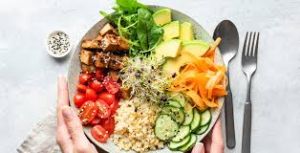
What Is a Diabetes-Friendly Diet? Key Principles for Managing Blood Sugar
Navigating the world of nutrition can be challenging, especially for those managing diabetes. A diabetes-friendly diet is not just about restricting certain foods; it’s about making informed choices that help regulate blood sugar levels while ensuring overall health and well-being. In this guide, we’ll delve into the core components of a diabetes-friendly diet, highlighting key foods and strategies to empower you on your health journey.


A diabetes-friendly diet-friendly diet typically includes foods that help manage blood sugar levels and promote overall health. Here are some types of foods that should be included:
1. Non-starchy vegetables: Such as leafy greens, broccoli, cauliflower, peppers, and tomatoes. These vegetables are low in carbohydrates and high in fiber, vitamins, and minerals.
2. Whole grains: Such as quinoa, brown rice, oats, and whole wheat products. Whole grains are rich in fiber, which slows down the absorption of sugar into the bloodstream and helps maintain blood sugar levels.
3. Lean proteins: Such as chicken, turkey, fish, tofu, and legumes. Protein helps to keep you full, reduces the impact of carbohydrates on blood sugar levels, and supports muscle health.
4. Healthy fats: Such as avocados, nuts, seeds, and olive oil. These fats have a minimal effect on blood sugar and provide essential nutrients. However, portion control is important, as they are high in calories.
5. Low-fat dairy products: Such as skim milk, yogurt, and cheese. Dairy products contain protein, vitamins, and minerals while being low in carbohydrates. Choose lower-fat options to limit saturated fats.
6. Fiber-rich fruits: Such as berries, apples, pears, and citrus fruits. Although fruits contain natural sugars, their high fiber content slows down sugar absorption and provides essential nutrients.
7. Herbs, spices, and flavorings: Use herbs and spices such as cinnamon, turmeric, garlic, and ginger to add flavor without adding extra salt, sugar, or unhealthy fats.
It’s important to note that managing diabetes is highly individualized, so consulting with a registered dietitian or healthcare professional can provide personalized diabetes-friendly diet recommendations based on specific needs and goals.
Disclaimer: This blog post is intended solely for informational purposes and does not constitute medical advice. Always consult with a qualified healthcare professional for personalized guidance regarding your specific health situation.
















